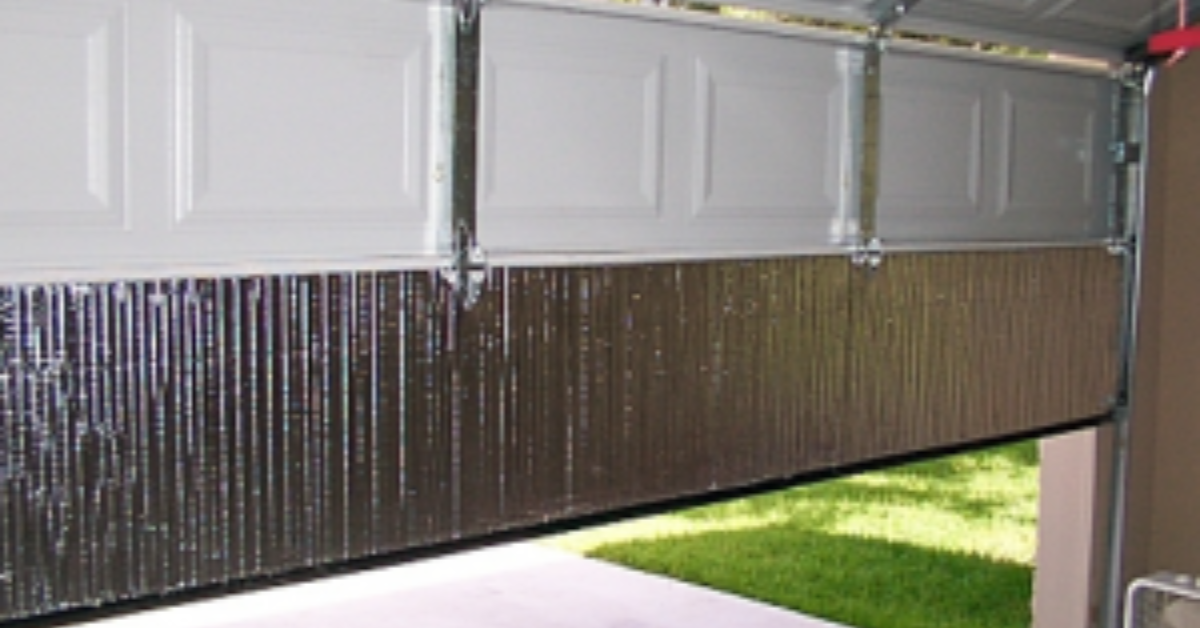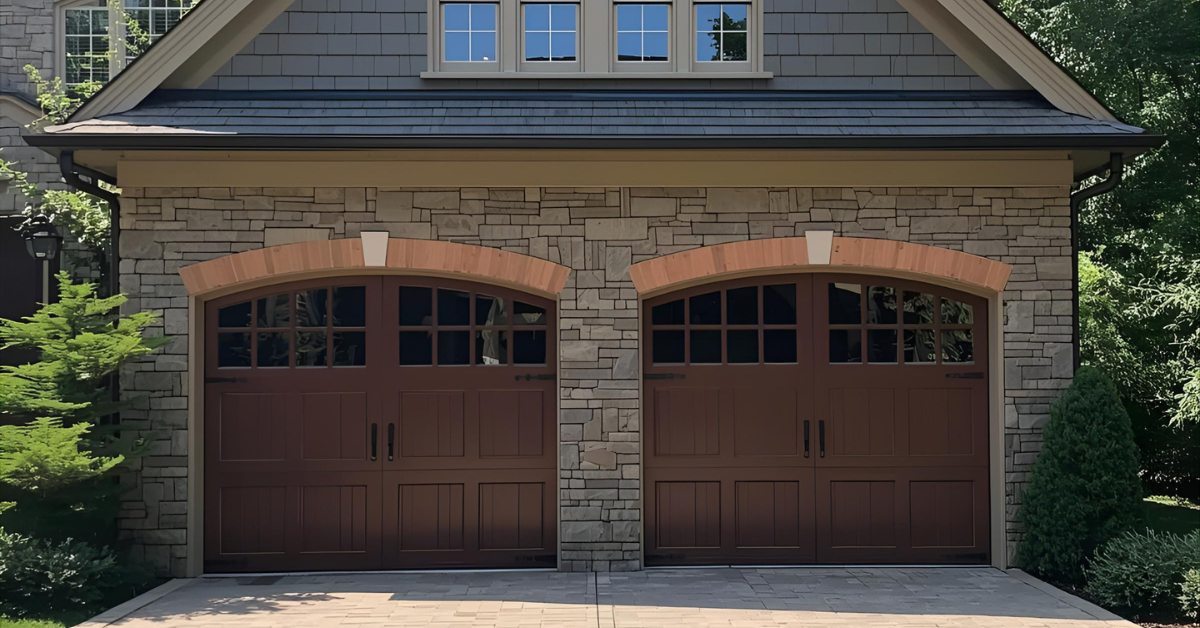Is It Worth Insulating Garage Door?
Insulating your garage door might not be the first thing that comes to mind when you think about home improvement projects, but it's a decision that can have significant benefits. In this article, we'll explore the question: Is it worth insulating your garage door? We'll delve into the advantages of garage door insulation, considerations before making the decision, types of insulation materials available, the insulation process, and long-term maintenance. By the end, you'll have a clear understanding of whether insulating your garage door is a worthwhile investment for your home.
Getting To Know Garage Door Insulation
Before diving into the benefits, let's clarify what garage door insulation entails. Garage door insulation involves adding a layer of material to the inside surface of your garage door to provide thermal resistance. This helps regulate the temperature inside the garage, keeping it warmer in the winter and cooler in the summer. Insulated garage doors are typically constructed with multiple layers of materials, such as steel or aluminum, with insulation sandwiched between them. On the other hand, uninsulated garage doors lack this additional layer of insulation, allowing heat to transfer more easily.
Benefits of Insulating Your Garage Door:
The decision to insulate your garage door comes with several compelling benefits:
Enhanced Energy Efficiency:
- When you insulate your garage door, you're essentially creating a barrier that helps to keep the warmth inside during the winter and the heat out during the summer. By doing so, you're effectively reducing the strain on your home's heating and cooling systems. This means they don't have to work as hard to maintain a comfortable temperature inside your home, resulting in lower energy consumption and ultimately, lower energy bills for you.
Improved Comfort and Temperature Regulation:
- With a well-insulated garage door, you can say goodbye to the drastic temperature fluctuations that often plague uninsulated garages. By maintaining a more consistent temperature inside the garage throughout the year, insulation ensures that the space remains comfortable for various activities and storage needs. Whether you're working on DIY projects, using the garage as a home gym, or simply accessing your vehicle, you'll appreciate the consistent comfort provided by insulation.
Protection for Stored Items:
- Insulation acts as a protective shield for the items stored in your garage, shielding them from the harsh effects of extreme temperatures and humidity. Tools, equipment, and vehicles are particularly vulnerable to damage caused by fluctuating temperatures, such as rust, corrosion, and deterioration of materials. By insulating your garage door, you create a more stable environment that helps preserve the condition and longevity of your belongings.
Noise Reduction:
- Insulated garage doors serve as effective sound barriers, both blocking out unwanted noise from the outside environment and dampening sound produced within the garage. This means you can enjoy a quieter and more peaceful environment inside your home, free from the disruptions of traffic noise, neighborhood activity, or loud equipment operating in the garage. Whether you're working on projects, engaging in hobbies, or simply relaxing, the reduced noise levels contribute to a more serene atmosphere overall.
Considerations Before Insulating:
Before rushing into insulating your garage door, there are a few factors to consider:
Climate Considerations
The climate in which you reside plays a significant role in determining the effectiveness of garage door insulation. In colder climates, where frigid temperatures are the norm during the winter months, insulation acts as a vital barrier against heat loss. By trapping warmth inside the garage, insulation helps maintain a comfortable temperature and reduces the need for excessive heating, thus lowering energy costs. Conversely, in warmer climates characterized by scorching summers, insulation serves to keep the garage cooler by blocking out the heat from the sun. This not only enhances comfort but also prevents heat from infiltrating your home, easing the burden on your air conditioning system and reducing cooling expenses.
Cost vs. Benefits Analysis
Before embarking on a garage door insulation project, it's essential to conduct a thorough cost-benefit analysis. While insulating your garage door can yield significant long-term savings in energy costs and enhance comfort, it's crucial to consider the upfront expenses associated with insulation materials and installation. By weighing these costs against the potential savings over time, you can make an informed decision about whether the investment in insulation is financially viable for your budget. Additionally, factoring in the potential non-monetary benefits, such as increased home comfort and resale value, can further inform your decision-making process.
Type of Garage Door:
The type of garage door you have is a critical factor to consider when exploring insulation options. Different types of garage doors, such as sectional, roll-up, or single-panel doors, may require specific insulation techniques or materials. For example, sectional garage doors with individual panels may accommodate foam board insulation, whileroll-up doors might be better suited for reflective foil insulation. Additionally, the material composition of your garage door, whether it's steel, aluminum, or wood, can also influence insulation compatibility. Before proceeding with insulation, it's essential to research the insulation options suitable for your specific type of garage door to ensure optimal performance and compatibility. Consulting with a professional installer or seeking expert advice can help you make an informed decision tailored to your garage door's unique characteristics.
Types of Garage Door Insulation Materials:
There are several types of insulation materials commonly used for garage doors:
Foam Board Insulation:Foam boards are lightweight and easy to cut, making them a popular choice for garage door insulation. They provide good thermal resistance and can be installed relatively quickly.
Reflective Foil Insulation:Reflective foil insulation consists of a layer of foil-backed foam that reflects heat away from the garage door. This type of insulation is particularly effective in hot climates.
Fiberglass Insulation: Fiberglass insulation comes in batts or rolls and offers excellent thermal resistance. However, it can be messy to work with and may irritate the skin and respiratory system.
Spray Foam Insulation: Spray foam insulation expands to fill gaps and cracks, providing a seamless layer of insulation. While it offers superior thermal performance, it can be expensive and challenging to install.
How to Insulate Your Garage Door:
Insulating your garage door is a relatively straightforward process that can be done in a few simple steps:
- Clean the surface of the garage door to remove any dirt, grease, or debris that could interfere with adhesion.
- Select an insulation material that suits your climate, budget, and personal preferences.
- Cut the insulation to fit the dimensions of your garage door panels and secure it in place using adhesive, tape, or fasteners.
- Ensure that the insulation is properly sealed and secured to the garage door to maximize its effectiveness.
Long-Term Maintenance and Care:
Long-term maintenance and care are crucial to ensure that your garage door insulation maintains its effectiveness over time. It's important to prioritize regular inspections of the insulation to identify any signs of damage, wear, or degradation. By addressing issues promptly, you can prevent further damage and maintain the efficiency of the insulation. If you notice any damage or wear, such as tears, gaps, or compression in the insulation, it's essential to take immediate action to repair or replace the affected areas. By staying proactive with maintenance and addressing any issues as they arise, you can prolong the lifespan of your garage door insulation and continue to enjoy its benefits for years to come.
Conclusion
Insulating your garage door is a worthwhile investment that offers numerous benefits, including enhanced energy efficiency, improved comfort, and protection for stored items. By carefully considering factors such as climate, cost, and insulation materials, you can make an informed decision about whether insulating your garage door is right for you. With proper installation and long-term maintenance, you can enjoy the benefits of a well-insulated garage for years to come.




